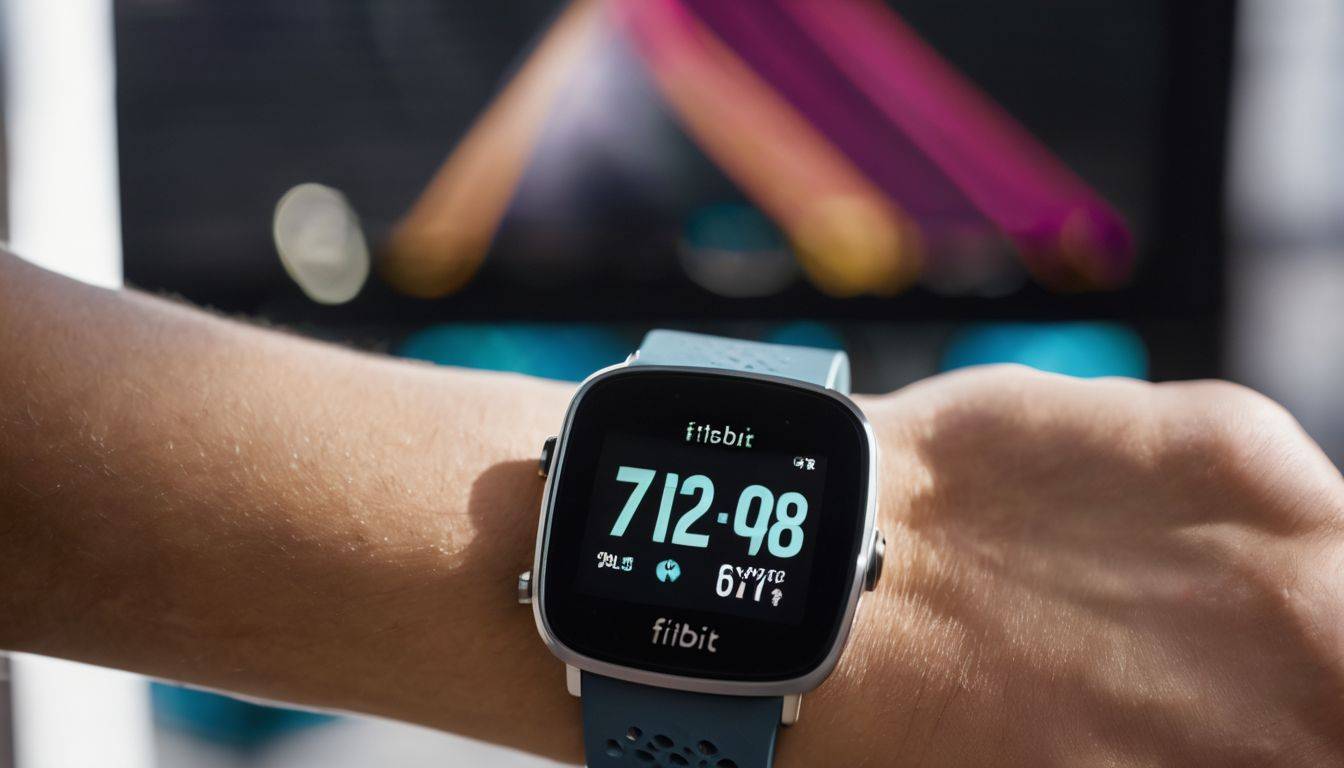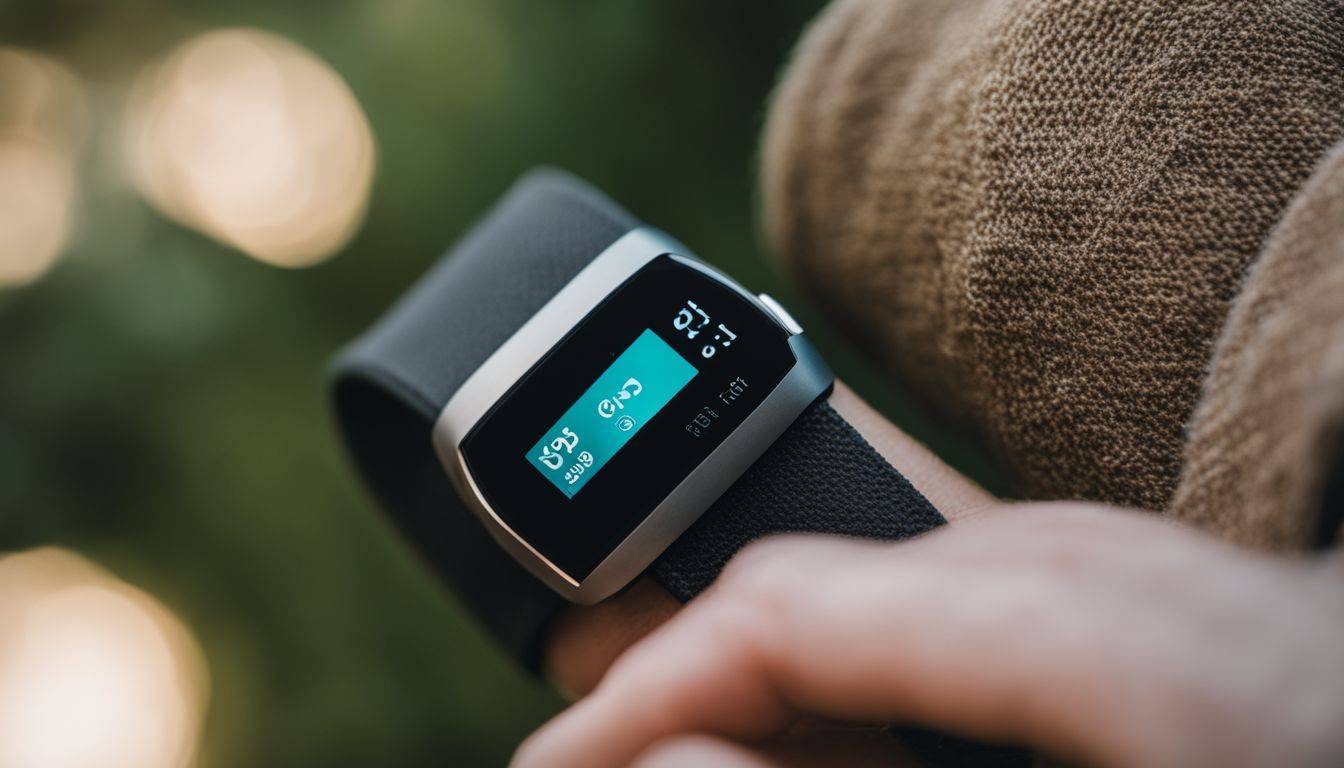Are you sporting a Fitbit but unsure if you’re getting the most out of it? With Fitbits tracking everything from steps to sleep, proper wear is key for accurate data. This guide will walk you through the do’s and don’ts of wearing your device, ensuring maximum benefit and comfort.
Read on—your fitness journey just got smarter!
How to Wear a Fitbit

Mastering the art of wearing your Fitbit is crucial for obtaining precise data and maximizing its potential as a fitness companion. Whether you’re aiming to track your daily activity or monitor your workouts with precision, correct placement and adjustment are key components that can make a significant difference in performance outcomes.
Placement for all-day wear vs. exercise
For all-day wear, place your Fitbit a finger’s width above your wrist bone. This gives you freedom to move and ensures the heart rate monitor works well. Keep it loose enough for comfort but secure to track steps and heart rate accurately.
During exercise, especially when lifting weights or running, tighten the band on your non-dominant hand for better readings. Just make sure there’s enough space to fit one finger under the band.
Adjusting its tightness helps keep the tracker steady against your skin even when you’re moving fast or sweating a lot.
Wearing inside or outside of wrist
After you’ve found the right balance for your all-day wear and exercise, consider the side of the wrist to wear your Fitbit. Some users prefer wearing their tracker on the inside of their wrist during workouts for better access to heart rate data.
This position can be especially useful if you engage in activities like cycling or weightlifting, where a palm-down posture is common. Just make sure it’s not too tight – there should still be that half-inch space from your skin.
Flipping over to the outside of your wrist might feel more natural and comfortable for daily activities. It keeps your Fitbit secure and out of the way as you go about your routine.
Whether you’re typing at work or running errands, wearing it on the outside ensures easy movement and convenient glances at your stats. Always use Fitbit branded bands for a snug fit that won’t irritate your skin or slide around as you move.
Adjusting for Handedness
Once you’ve decided whether to wear your Fitbit on the inside or outside of your wrist, think about which hand you use most. Left-handed people might get better tracking by wearing the device on their non-dominant wrist, usually the right one.
This switch helps make sure that every step and movement counts.
Your Fitbit has settings for this reason. Go into these settings and tell it if you’re left-handed or right-handed. It will adjust its sensors for more accurate fitness tracking. Remember to do this especially if you’re using a heart rate feature like on the Fitbit Charge HR or Fitbit Sense!
Ensuring Comfort and Performance with Your Fitbit

Finding that sweet spot with your Fitbit isn’t just about tracking metrics—it’s also ensuring you’re comfortable enough to forget it’s even there. A snug, but not constricting fit ensures accurate data while allowing your skin to breathe; think of it as a watchful companion rather than a tight handcuff on your health journey.
Avoid wearing it too tight
Make sure your Fitbit isn’t squeezing your wrist. It should be snug but not tight, letting you move your wrist freely. If it’s too tight, it can cause discomfort and even affect the tracker’s sensors.
Think of putting on a watch – it needs to fit just right, not digging into your skin or leaving marks.
Leave some space – about a finger’s width – between your band and wrist. This ensures proper blood flow and lets the sensor do its job accurately. Remember, if you’re wearing accessory bands made of leather, metal, or woven materials during everyday activities, they shouldn’t be as tight as sport bands used for workouts.
Give your wrist a rest periodically
Take off your Fitbit after wearing it for a long time. Your skin needs to breathe, so unclasp it and let your wrist rest. Experts suggest an hour break, especially during showering.
This helps keep away soap that can irritate the skin. Don’t worry; a short rest won’t mess up your fitness tracking.
Next, focus on keeping your device in top shape.
Maintaining Your Fitbit
Ensuring your Fitbit stays in top shape is just as crucial as wearing it correctly for accurate tracking. It’s a piece of technology that’s with you through every stride and slumber, so keeping this fitness companion clean and functional not only extends its life but also safeguards your skin from irritation.
Keep it clean and dry
Sweat and dirt can mess with your Fitbit’s sensors. That’s why keeping it clean is a must. After workouts or any heavy sweating, take off your tracker. Use only fresh water and soap-free cleansers to wipe down the band and your wrist.
This helps maintain the device’s accuracy and keeps your skin happy.
Drying off your Fitbit after cleaning is just as important. Water trapped against the skin could lead to irritation or rash—dry hands, dry tracker before you strap it back on! Remember, showers are a no-go for most devices; that’s prime time for giving your wrist that much-needed break from wear.
Regularly clean your band and wrist
Keeping your Fitbit clean is key for comfort and performance. Dirt and sweat can lead to skin irritation or even affect your device’s sensors. Here’s how to maintain your band and wrist:
- Take off your Fitbit and rinse your wrist. Use cool water to wash away any sweat or dirt.
- Clean the band with a soap – free cleanser. Gently scrub it with fresh water but avoid soaps that could harm the material.
- Dry the band thoroughly after rinsing. Pat it down with a towel before putting it back on.
- Air out your wrist. Before reattaching the Fitbit, let your skin breathe for a bit.
- Inspect the band weekly. Look for signs of wear that might cause discomfort or affect the tracker’s fit.
Tips for handling Skin Sensitivities
Choose Fitbit bands made from materials that are kind to your skin. Look for hypoallergenic options if you’re sensitive to nickel or acrylates found in many fitness trackers. Switch up the wrist you wear your device on, giving each side a break.
This can help prevent irritation from constant contact with the band.
Clean your Fitbit and wrist after workouts or sweating. Use soap-free cleanser and fresh water for best results. Check how the band fits throughout the day; it should be snug but not tight.
If you get a rash, stop wearing your tracker and see a doctor if needed. Try different bands to find one that feels comfortable and doesn’t irritate your skin.
Remember, third-party bands might not fit right and could cause problems. Stick with Fitbit branded or authorized accessories to avoid these issues. Your comfort is key to keeping fit!
Charging Your Fitbit: Best Practices
Charging your Fitbit correctly helps keep it ready for all your fitness-tracking needs. Follow these best practices to get the most out of your device’s battery life.
- Keep your Fitbit and its charger away from metal objects while charging.
- Unplug the charging cable when you’re done to save energy.
- Use only the charger that came with your Fitbit for optimal performance.
- Ensure the connectors on both your Fitbit and the charger are clean before plugging in.
- Plug the charger into a USB port or wall adapter that is not too powerful for your device.
- Charge before it completely dies to help maintain battery health over time.
- Don’t leave your Fitbit charging for longer than necessary; a few hours should do the trick.
- Check that all pins on the charger align correctly with those on your Fitbit to ensure a good connection.
Conclusion
Wearing your Fitbit the right way matters. Keep it snug, but not too tight. Remember to clean it and give your wrist a break now and then. Listen to your body—if the band causes discomfort, take it off and consult with someone if needed.
Following these tips will help you get the best results from your Fitbit journey!
